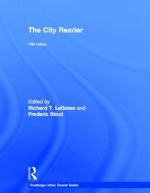
|
| Name: _________________________ | Period: ___________________ |
This test consists of 15 multiple choice questions and 5 short answer questions.
Multiple Choice Questions
1. When was Patrick Geddes's "City Survey for Town Planning Purposes, of Municipalities and Government" first published?
(a) 1915.
(b) 1909.
(c) 1912.
(d) 1913.
2. What is the third of four kinds of power described by the author in "Regime Theory and Urban Politics"?
(a) Systematic.
(b) Preemptive.
(c) Coalition.
(d) Command/social.
3. What is referred to as the relationship and interaction between governmental and non-governmental bodies, seeing how they interact and get results in "Regime Theory and Urban Politics"?
(a) Tug of war.
(b) Obediance.
(c) Power tolerance.
(d) Regime theory.
4. When was "How to Study Urban Political Power" first published?
(a) 1989.
(b) 1992.
(c) 1985.
(d) 1990.
5. Who does the author of "The Black Underclass" criticize for their fear to confront the issues of the poor black community?
(a) Republicans.
(b) Democrats.
(c) Liberals.
(d) Communists.
6. When were "Author's Introduction" and "The Town-Country Magnet" first published?
(a) 1900.
(b) 1902.
(c) 1901.
(d) 1898.
7. In "Choosing a Future," Murray examines education as a possible solution, noting that many barriers to a fair education had already been eliminated by what era?
(a) 1950s.
(b) 1970s.
(c) 1980s.
(d) 1960s.
8. When was "Urbanism as a Way of Life" first published?
(a) 1938.
(b) 1928.
(c) 1937.
(d) 1935.
9. Who wrote "Public Parks and the Enlargement of Towns"?
(a) Raymond Unwin.
(b) Saskia Sassen.
(c) Frank Lloyd Wright.
(d) Frederick Law Olmsted.
10. What kind of streets does the author of "Of Cooperation in Site Planning, and How Common Enjoyment Benefits the Individual" argue have reduced urban overcrowding?
(a) Wide, straight streets.
(b) Narrow, straight streets.
(c) Wide, curved streets.
(d) Narrow, curved streets.
11. According to the author of "Public Parks and the Enlargement of Towns," parks combat vice and what?
(a) Social degeneration.
(b) Internal rage.
(c) Boredom.
(d) Obesity.
12. In "How to Study Urban Political Power," the author writes that there have been two groups of researchers studying city politics: the pluralists, and who?
(a) The ruralists.
(b) The realists.
(c) The urbanists.
(d) The structuralists.
13. What did Ebenezer Howard call the central area in his Utopian cities in "Author's Introduction" and "The Town-Country Magnet"?
(a) The Ivory Tower.
(b) Crystal Palace.
(c) The Green Obelisk.
(d) The Drum Circle.
14. Lewis Mumford presents the city as a collection of primary groups assembled together, with their physical organization determining levels of what?
(a) Happiness.
(b) Drama.
(c) Fame.
(d) Wealth.
15. Where was Ebenezer Howard from?
(a) Spain.
(b) England.
(c) France.
(d) Germany.
Short Answer Questions
1. In comparing U.S. and U.K. governments in "Future Directions for Urban Government in Britain and America," the author concludes the American system is more what?
2. In "Future Directions for Urban Government in Britain and America," the author discusses the developments in the U.S. and U.K. for the past how many years?
3. Who wrote "How to Study Urban Political Power"?
4. In comparing U.S. and U.K. governments in "Future Directions for Urban Government in Britain and America," the author concludes the British system is more what?
5. What kind of cities does Ebenezer Howard present as a protest against overcrowding?
|
This section contains 464 words (approx. 2 pages at 300 words per page) |

|




